What is our primary use case?
We use it for end-user computer performance monitoring and troubleshooting.
How has it helped my organization?
In short, Aternity gives us the actual user performance data. This is very different, because typically a lot of the end-user device performance was handled by experience. The client service engineers would base their evaluation on their experience, and of course, typically they would say that the secret of IT is "restart." When they would troubleshoot a user's computer problem, they would tend to go with restart or reinstall or reimage, which is the ultimate step. If they could not solve all the problems, they would just reimage the whole thing.
Aternity gives us the capability to troubleshoot, to find out exactly where the problem is. It enables us not only to fix the current problem, but it gives us the knowledge to prevent similar problems in other computers. That gives us the capability to provide proactive end-user support.
What is most valuable?
The most valuable feature is the application performance troubleshooting because Aternity is able to provide the performance from the end-user perspective. It doesn't just give the standard application logon time, etc., rather it's also able to measure the performance inside the application, the performance of specific transactions in the application, and break it down into three elements: the client time, the network time, and the server time. This gives us a lot of insights into what we need to focus on to improve the performance of an application.
Another area is the before and after comparison. Before and after any change, we can use Aternity to compare the performance. For example, when we implement a big application on our infrastructure, or even let's say when they moved the office, we had the user performance benchmark in the previous office location. Once they moved to a new location, we could look at Aternity and the overall performance and see if there was any change. We find that's a very helpful feature.
The new office was supposed to have newer hardware, bigger than what we had, so the performance was supposed to be better. And it turned out, after the move, that user feedback was mixed. They couldn't really spell out what the real issue was and we didn't know if it was based on their feeling. But from the Aternity data we could tell that the network performance actually dropped. Then we started to look into what could be the problem and what we found out that the network equipment was misconfigured. That led to the correction of the error and we could see from Aternity that the performance was getting much better. That was one of the experiences we had using it for the before and after comparison.
A third valuable feature is the end-user device troubleshooting or the performance monitoring. For example, when we look at a computer that has slow WiFi connectivity, we are able to see what is the actual transmission speed, what the WiFi signal strength is, etc. We are able to find out what the possible causes are of the user performance issues. This gives us great insights.
Also, all the way to the back-end from the server, Aternity provides visibility into the employee device and into application transactions, in the SaaS version. We haven't fully tested that yet. But Aternity has the capability of analyzing the server side and to break it down further into different processes and different procedures that have longer lead times.
In addition, the Digital Experience Management Quadrant (DEM-Q) to see how our digital experience compares to others who use Aternity, has gained a lot of attention, not just from IT staff but also from management. We are looking at it and trying to understand what the numbers mean and, more importantly, what the costs are. It tells us we are in a certain quadrant. Why are we there? What can we do to improve? It's very interesting. I wouldn't say it's helpful yet, because we haven't fully understood it, but we are very interested in it.
What needs improvement?
Aternity does provide performance numbers, the data. However, it doesn't tell you what you can do about it. It just presents the facts. How to interpret the data, and how to draw conclusions from a lot of the data, requires knowledge and experience. That's the part that I would hope Aternity can continue to explore and give us that kind of capability.
I understand it's challenging. A lot of things may not be due to a single factor or make it easy to draw out an action plan. If, for example, we look at the stability index and it's low, there could be many factors involved. Right now, Aternity doesn't tell you that maybe by doing this or that sequence you can improve your stability next. Not yet. That's the area I'm hoping for. For the time being, I'm developing the team who will have the experience and knowledge and provide that part of the capability.
It is an area that I would love to see Aternity make more progress in, but I also understand it's challenging. There's definitely the room to continuously explore it. It requires very good experience with the hardware and also requires a lot of intelligence. It's going to be very exciting if Aternity can make more of a breakthrough in that area.
We are also trying to integrate it with ServiceNow. We are still learning that process. It would be easier if they had more configurations or the capability to inject the logic into the interface. For example, right now Aternity creates alerts that can turn into ServiceNow tickets, but there are a few areas that can be improved.
First, the alert is pretty much defined by Aternity. An alert has to be created to be converted to a ticket. But if I don't need to create an alert, can I make a dashboard and create certain parameters and convert from those parameters into a ticket? That would be very powerful. Right now, only alerts can convert to tickets.
Second, when they convert to tickets, it would be helpful if they put in a lot more logic which we can easily configure. For example, when a user is from a certain region, it would be good if we could automatically assign the issue to the specific IT group in that region. We are still working on this. Right now, the scripts for the integration are still rather complex and we are still trying to understand this part.
On another topic, if they had an easier way to claim back a license, that would be beneficial to us, but it may not be very beneficial to Aternity, because we might not need to buy so many licenses. For some computers, once we finish troubleshooting, we probably don't need Aternity on them all the time.
For how long have I used the solution?
I have been using Aternity for at least the past five or six years. We were using on-prem Aternity for many years, and only this year we've migrated to the SaaS version.
What do I think about the stability of the solution?
Generally, it's quite stable.
There have been some incidents where the agent was deployed but didn't report back the data. In those cases, redeploying the agent typically resolved the issue. Overall, the stability is good. I don't have much of a concern about that.
I do notice, in terms of the timeliness of the data, it may not be what I expected. I was expecting data for what happened 10 minutes ago, but that may not be there. So the timeliness may not be real-time.
What do I think about the scalability of the solution?
Scalability is mainly the cost side of it. To roll it out to more users, it's pretty straightforward. You just deploy the agents.
Currently, we have about 1,000 devices in the solution. Whether we will increase our usage depends on how well we can prove the value of Aternity to the users, to IT, and to management.
How are customer service and technical support?
Most of the time we get quite a good response. The people that we have worked with, from our collaboration with their accounts team and the presales team, are excellent. We met a number of the people and they are extremely friendly and helpful, and they're very patient. I'm very impressed by the people.
Which solution did I use previously and why did I switch?
We didn't use any other similar solution. Aternity is the one that we have used for the end-user performance, monitoring, and troubleshooting, all these years.
How was the initial setup?
The SaaS version is pretty straightforward, there's not much of a set up, per se. The setup is more about the client deployment.
When we switched to the SaaS version, the deployment took at least one month. The reason was not just the deployment. The reason was more about the internal process, because we don't have enough licenses for every computer. That meant we had to identify the end-user devices to which we would push the agent. That took time. It's not the complexity of Aternity, it was our decision on whom to push it to.
In terms of selecting the users, we went by different categories. Every company can certainly make its own decision about whom they want to deploy to. We wanted to deploy to some of the VIP users, and we also wanted to deploy to users who had more frequent use of certain key applications. We also wanted to deploy to the users who tended to have more issues. And we also deployed to the Citrix users.
For deployment of Aternity we don't require much staff, but we do for support. We definitely need people to constantly look at it, to analyze it, and to generate the reports. We have a team to support Aternity. The core team is about four people but we leverage the client service team as well. We are trying to develop the client service teams in the different regions to be able to analyze the user performance data for that region and for other regions, and to take care of the device issues in their region. For us, Aternity is a tool to give out the information. As I mentioned, the action part still needs to be taken by our IT folks.
What about the implementation team?
What was our ROI?
I'm trying hard to justify Aternity, but sometimes it's very hard to come up with a return of investment for it. It's hard to calculate the value of, for example, the performance improvement of your competitor. I haven't come up with a good way of calculating the return on investment yet.
What's my experience with pricing, setup cost, and licensing?
Pricing and licensing is pretty standard.
Which other solutions did I evaluate?
Ever since I have been using it and have been the main advocate of Aternity, I haven't evaluated other solutions, even though I do hear about other solutions. I look into some of the comparisons, but I haven't really done a thorough comparison.
What other advice do I have?
I do recommend the SaaS version, which has a lot of very good features. And I recommend the team, it's very friendly and helpful. But I would also caution that you need to put in the effort to learn the tool. It's not something that, when you have the tool, all the problems go away. It only tells you the data. How to use the data, how to derive the action and how to improve, still relies on the people who are reviewing the data. It's like the weather forecast. They tell you the weather forecast, but it's your decision, whether you still want to go out or you want to climb a mountain.
Aternity does require effort from the IT team. They need to spend time and learn how to best use the tool. There is definitely a lot of reward from doing that.
The solution hasn't yet helped us to reduce hardware refresh costs by considering actual employee experience, rather than just the age of the employees’ devices, but it's an interesting point. I would like to explore it more. Even though we have been using Aternity for a few years, we were not able to justify the value very well in the past, when it was on-prem. This year, with the Aternity SaaS version, we are paying a lot of attention to it.
I hope we can derive all the value from Aternity, including reducing refresh costs. It makes sense that if we analyze the user's performance and it is still functioning very well, we probably don't need to replace it based on the number of years the device has been in use. But we are talking about the end-user device as the primary focus. Their failure is not just in application performance alone. It could be the monitor having a problem, or it could be the battery having a problem, or it could be the motherboard having a problem. I would like to see whether Aternity can help us to reduce and avoid unnecessary refreshes.
Disclosure: PeerSpot contacted the reviewer to collect the review and to validate authenticity. The reviewer was referred by the vendor, but the review is not subject to editing or approval by the vendor.

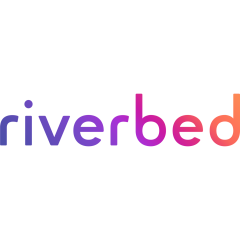









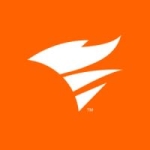
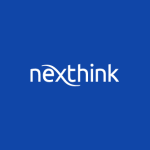
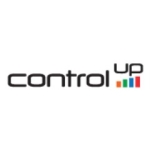
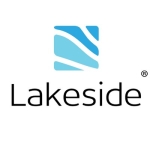



Is everyone aware that Aternity now has a User Forum on Riverbed?
You can find it on the Riverbed forumn under SteelCentral and then Aternity
The link is splash.riverbed.com/community/product-lines/steelcentral/steelcentral-aternity